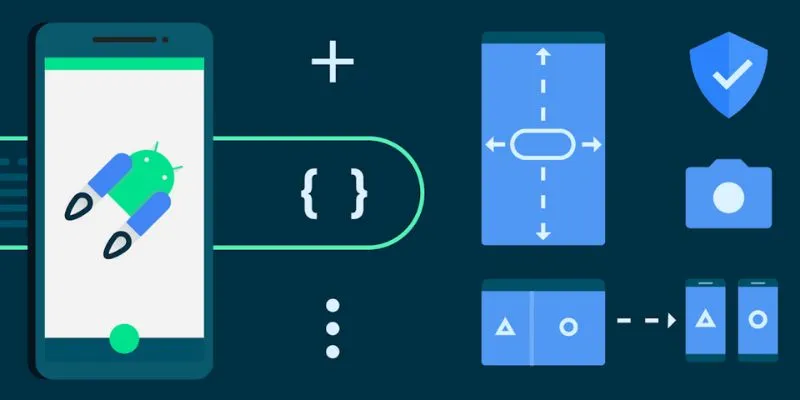Android Jetpack is a collections of libraries, tools, and guidance provided by Google to help developers build high-quality Android apps more quickly and effectively. Introduced at Google I/O 2018, Jetpack aims to simplify Android development by addressing common challenges faced by developers and promoting best practices. In this blog post, we’ll explore the key features of Android Jetpack and how they can benefit Android app development. Are you looking to advance your career in Android? Get started today with the Android Training in Chennai from FITA Academy!
Understanding Android Jetpack
Android Jetpack is divided into four major components: Foundation, Architecture, Behavior, and UI. Each component provides libraries and tools that address specific aspects of Android app development, enabling developers to focus on building great apps without reinventing the wheel.
Key Features of Android Jetpack
- Foundation Components
- AppCompat: Backwards-compatible support for modern Android features and material design guidelines.
- Lifecycle: Lifecycle-aware components that manage Android app lifecycle events, simplifying handling of configuration changes and resource management.
- LiveData: Observable data holder classes that are lifecycle-aware, enabling easy integration with UI components and ensuring data consistency.
- ViewModel: Stores and manages UI-related data in a lifecycle-conscious manner, preserving data across configuration changes and ensuring separation of concerns.
- Architecture Components
- Room: Provides an abstraction layer over SQLite for database operations, offering compile-time SQL validation, LiveData integration, and support for complex data queries.
- ViewModel: Allows storing and managing UI-related data in a lifecycle-conscious manner, enabling efficient data persistence and separation of concerns.
- Paging: Library for loading and presenting large data sets gradually in RecyclerViews, with built-in support for loading data from local databases or network sources.
- Behavior Components
- Navigation: Simplifies the implementation of navigation in Android apps, offering a type-safe and declarative way to define app navigation paths, reducing boilerplate code and making navigation logic easier to understand and maintain.
- UI Components
- ConstraintLayout: A flexible and efficient layout manager for building complex UIs in Android apps, supporting flat hierarchies, responsive design, and dynamic layouts.
- RecyclerView: A powerful and flexible UI component for displaying large data sets in Android apps, with support for custom item layouts, animations, and view recycling.
- Fragment: A modular and reusable UI component that represents a portion of a user interface (UI) or behavior, facilitating UI composition and reusability. Learn all the Android techniques and become an Android developer. Enroll in our Android Online Training.
Benefits of Using Android Jetpack
- Modularity and Reusability: Jetpack components are designed to be modular and reusable, promoting code organization, separation of concerns, and code reuse across different projects.
- Simplified Development: Jetpack abstracts away common tasks and boilerplate codes, enabling developers to focus on building app features rather than dealing with low-level implementation details.
- Lifecycle Awareness: Jetpack components are lifecycle-aware, meaning they automatically handle Android lifecycle events, such as configuration changes and activity/fragment lifecycle transitions, reducing the risk of memory leaks and resource management issues.
- Compatibility and Consistency: Jetpack components ensure compatibility across different versions of Android and device configurations, providing a consistent development experience and reducing fragmentation-related challenges.
Android Jetpack is a powerful toolkit for Android developers, offering a comprehensive set of libraries, tools, and guidance to streamline app development and improve app quality. By leveraging Jetpack’s key features, developers can build modern, modular, and maintainable Android apps more efficiently, while benefiting from improved compatibility, lifecycle management, and code reuse. As Google continues to evolve and expand Jetpack, it remains an essential tool for developers looking to build high-quality Android apps that meet the demands of today’s users and devices. Looking for a career as an Android developer? Enroll in this Advanced Training Institute in Chennai and learn about Android techniques and tools from experts.
Read more: Android Interview Questions and Answers
